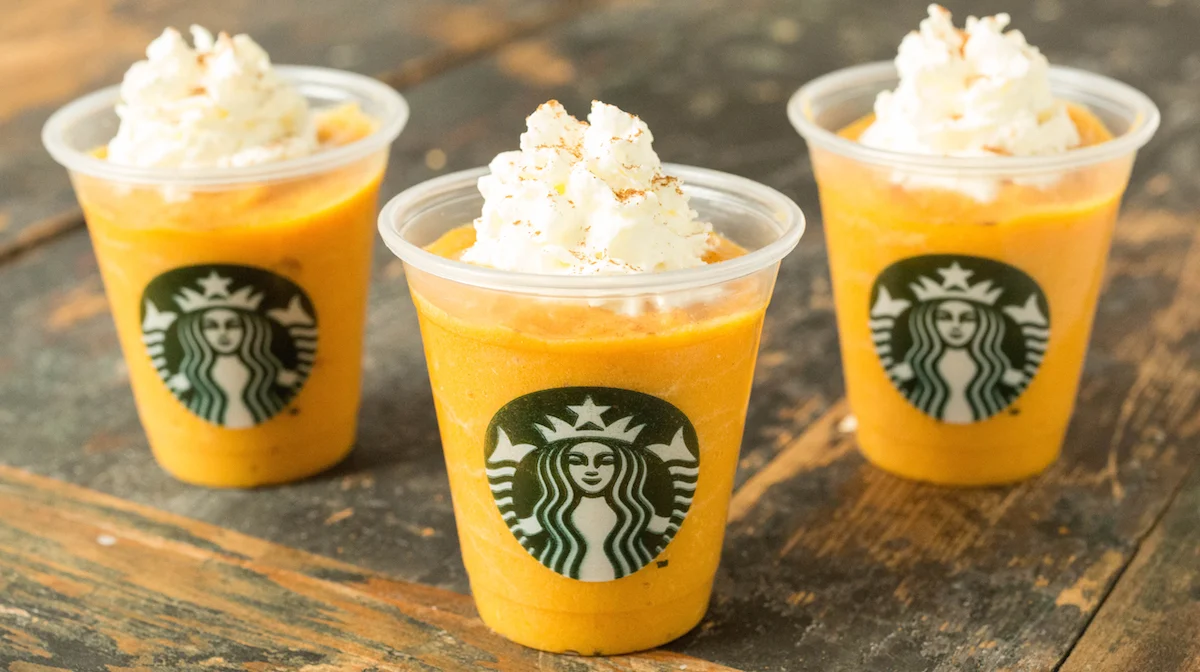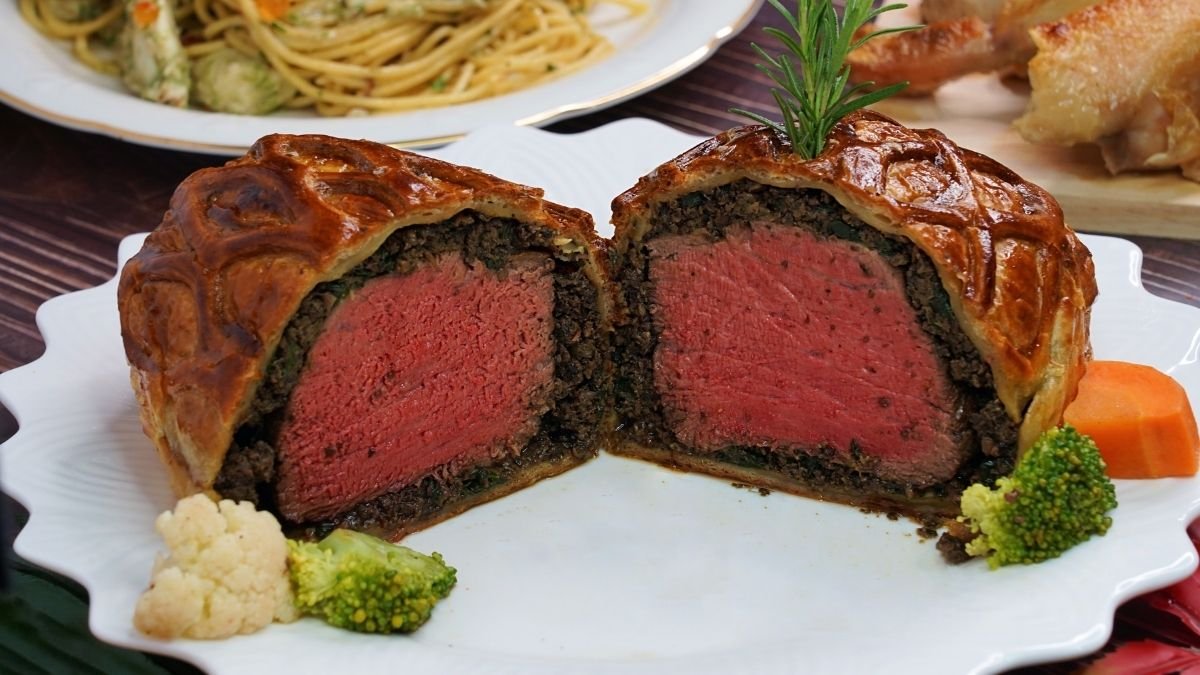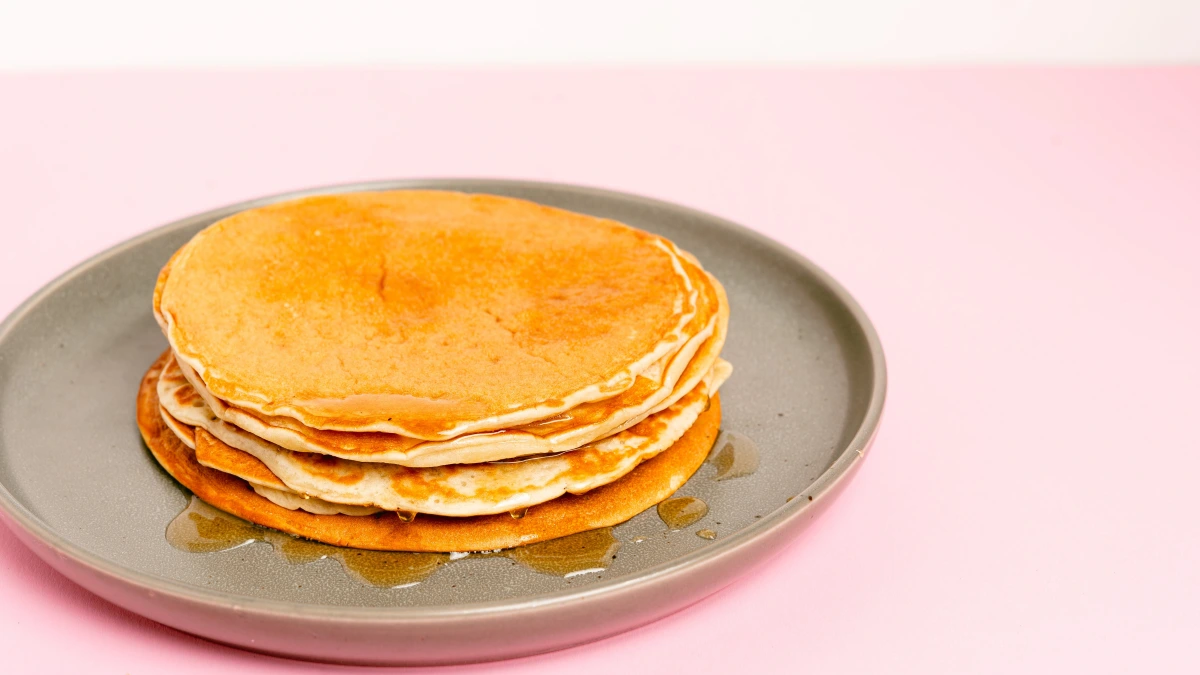Making homemade cat food meals is a game-changer for your feline’s health and happiness.
These five simple DIY recipes use fresh, wholesome ingredients that support digestion, energy, and a shiny coat. No fillers, just real food your cat will love!
Say goodbye to mystery ingredients and hello to easy, nutritious meals packed with flavor.
Get ready to treat your kitty to something truly special—made with love and care at home!
Save this Post for Later!

#1. Homemade Chicken and Rice Cat Food Recipe – A Wholesome Meal for Your Feline Friend

Every pet parent wants the best for their furry companion, and that includes providing high-quality, nutritious meals.
If you’ve ever wondered what’s really in commercial cat food or wanted to offer your cat a meal made with love, this simple homemade chicken and rice cat food recipe is a fantastic option.
It’s easy to prepare, made with just a few wholesome ingredients, and packed with the nutrients your cat needs to stay happy and healthy.
What you’re looking for a fresh alternative to store-bought food or need a gentle meal for a cat with a sensitive stomach, this recipe is a great choice.
Why This Recipe is a Game-Changer for Cat Parents
One of the biggest concerns with commercial cat food is the inclusion of unnecessary fillers, preservatives, and artificial additives.
By making your own cat food at home, you have complete control over what goes into your pet’s diet.
This recipe features lean chicken breast, soft rice, and a touch of pumpkin—an excellent combination for digestion, protein intake, and overall feline health. It’s also perfect for picky eaters who turn their noses up at standard kibble.
Another great thing about this meal is its simplicity. You don’t need fancy equipment or hard-to-find ingredients.
If you’re short on time, this meal can be prepared in under 30 minutes, making it a convenient choice for busy cat owners.
Plus, it’s a great way to supplement your cat’s diet with fresh, natural ingredients while ensuring they get a balanced meal.
Why You’ll Love This Recipe
- Budget-Friendly – Homemade cat food can be more affordable than premium store-bought options.
- Control Over Ingredients – No artificial additives, fillers, or unnecessary preservatives.
- Great for Sensitive Stomachs – A simple, easy-to-digest recipe for cats with dietary sensitivities.
- Quick and Easy – Can be made in under 30 minutes with minimal effort.
- Fresh and Nutritious – High-quality protein and fiber to keep your cat satisfied and healthy.
Essential Information
Prep Time: 5 minutes
Cook Time: 15-20 minutes
Total Time: 20-25 minutes
Yield: Approximately 1-2 servings
Serving Size: Based on your cat’s weight and dietary needs
Shelf Life: Refrigerate unused portions and discard after 3 days
Storage: Store in an airtight container in the refrigerator
What You’ll Need
To make this meal, you don’t need any fancy kitchen gadgets—just a few everyday tools.
A pot for boiling the ingredients, a knife and cutting board for preparation, and a mixing bowl for combining everything.
If you plan to store leftovers, an airtight container is ideal to maintain freshness.
Ingredients

- ½ cup diced chicken breast (skinless, boneless)
- ¼ cup white rice
- 1 tablespoon canned pumpkin (unsweetened, pure pumpkin)
- ¼ cup water (as needed for moisture)
Using high-quality ingredients is essential for your cat’s health. Opt for organic chicken if possible and make sure the pumpkin is plain and free from added sugars or spices. If your cat has dietary restrictions, consult your vet before making substitutions.
Expert Tips Before You Start
- Always cook the chicken thoroughly to avoid any risk of foodborne illnesses.
- Use plain, unseasoned rice to prevent any stomach upset.
- Allow the food to cool completely before serving to avoid burning your cat’s mouth.
- Gradually introduce homemade food into your cat’s diet to prevent digestive issues.
- If your cat has specific dietary needs, consult your vet before making major changes to their diet.
Step-by-Step Instructions

- In a small pot, bring water to a boil and add the diced chicken breast. Boil until fully cooked (approximately 10-12 minutes), ensuring no pink remains.
- In a separate pot, cook the white rice according to package instructions. Once fully cooked, let it cool slightly.
- In a mixing bowl, combine the cooked chicken, cooked rice, and canned pumpkin. Add a small amount of water if needed to achieve a moist, mashable texture.
- Allow the mixture to cool completely before serving it to your cat.
- Store any unused portions in an airtight container in the refrigerator for up to three days. Discard any leftovers after this time to ensure freshness and safety.
Variations and Substitutions
This recipe is simple, but it can be adapted to suit your cat’s needs. If your feline friend prefers a softer texture, you can blend the ingredients together after cooking.
For additional nutrients, consult your vet about adding a feline-friendly supplement such as fish oil or taurine powder. If your cat is allergic to chicken, you can substitute it with cooked turkey.
Storage and Freshness Tips
Homemade cat food doesn’t contain preservatives, so proper storage is essential. Keep leftovers in an airtight container in the fridge and use within three days.
If you’d like to make a larger batch, consider freezing small portions and thawing them as needed.
Serving Guidelines
The portion size should be adjusted based on your cat’s weight, activity level, and dietary needs.
A good rule of thumb is to serve about ¼ to ½ cup per meal, depending on your cat’s size. Always provide fresh water alongside meals.
Safety Considerations
Never add onions, garlic, or seasoning to homemade cat food, as these ingredients are toxic to cats.
Always cook meats thoroughly to eliminate any risk of bacteria, and introduce new foods gradually to monitor for allergic reactions.
If you notice any digestive upset, consult your veterinarian immediately.
Common Questions and Troubleshooting
Q: Can I store leftovers for longer than three days?
A: It’s best to use refrigerated portions within three days. If you need to store it longer, freeze it in small portions and thaw as needed.
Q: My cat is a picky eater—how can I encourage them to try homemade food?
A: Some cats take time to adjust to new textures and flavors. Try mixing a small amount of the homemade food with their regular diet and gradually increase the ratio.
Q: Can I add supplements to this recipe?
A: Yes! If your vet recommends it, you can add taurine, fish oil, or other feline-safe supplements to boost nutrition.
#2. Homemade Chicken & Pumpkin Delight: A Wholesome Meal for Your Feline

As a devoted cat parent, I’ve always been on the lookout for ways to keep my furry friend’s diet both nutritious and delicious.
Store-bought cat food can be convenient, but sometimes, I prefer knowing exactly what goes into my cat’s bowl.
That’s why I created this Homemade Chicken & Pumpkin Delight—a simple, wholesome meal packed with lean protein, essential nutrients, and feline-approved flavors.
Whether your cat is a picky eater, has a sensitive stomach, or you just want to add variety to their meals, this recipe is sure to be a hit.
Why This Recipe is Purr-fect for Your Cat
Not only is this meal easy to make, but it also supports your cat’s overall health.
Pumpkin is known for aiding digestion, while chicken provides high-quality protein essential for strong muscles. This meal is also grain-free, making it ideal for cats with food sensitivities.
Plus, you can prepare it in batches and store it for later, ensuring your kitty always has a fresh, homemade option.
Essential Recipe Information
Prep Time: 10 minutes
Cook Time: 15 minutes
Total Time: 25 minutes
Yield: 3-4 servings
Serving Size: 1/4 to 1/2 cup per meal (adjust based on cat’s weight)
Storage: Refrigerate for up to 3 days or freeze for up to 3 months
Equipment Needed
To make this recipe, you’ll need a few basic kitchen tools:
- A small pot for boiling chicken
- A blender or food processor for mixing
- A sharp knife for dicing ingredients
- Measuring cups and spoons for accuracy
- Airtight containers for storage
If you don’t have a food processor, you can finely mash the ingredients with a fork, but blending helps create a smoother texture that’s easier for cats to eat.
Ingredients (Main Components)

- 1/2 cup cooked chicken breast (shredded or blended) – Provides lean protein and essential amino acids
- 1/4 cup pumpkin puree (unsweetened, plain) – Aids digestion and promotes gut health
- 1/4 cup low-sodium chicken broth – Enhances flavor and hydration
- 1 teaspoon fish oil – Rich in omega-3 fatty acids for a healthy coat and skin
- 1/2 teaspoon powdered eggshell (optional) – A natural calcium source for strong bones and teeth
- 1/4 teaspoon taurine supplement (if needed) – Essential for heart and eye health
💡 Pro Tip: Always use plain pumpkin puree, not pumpkin pie filling, which contains harmful spices and sugars.
Expert Tips Before You Begin
- Choose high-quality chicken that is free from added seasonings or salt.
- Do not use garlic, onions, or seasonings, as these can be toxic to cats.
- Ensure the texture is soft and moist, especially for senior cats or kittens.
- Taurine is crucial for feline health, so if you are not using dark meat (which contains natural taurine), consider adding a supplement.
- Introduce new foods gradually to avoid digestive upset.
Step-by-Step Instructions

- Cook the Chicken: In a small pot, bring water to a boil and add the chicken breast. Simmer for about 12-15 minutes until fully cooked. Let it cool before shredding or blending.
- Prepare the Pumpkin Mix: In a bowl, combine the pumpkin puree with low-sodium chicken broth. Stir until smooth.
- Blend the Ingredients: Add the shredded chicken, pumpkin mixture, fish oil, powdered eggshell (if using), and taurine supplement to a blender or food processor. Blend until you reach your cat’s preferred consistency—smooth for easy digestion or chunkier for texture.
- Serve or Store: Portion out the meal and serve immediately, or store in an airtight container in the refrigerator for up to 3 days.
- Freeze for Later: If making a large batch, divide portions into freezer-safe containers. Thaw in the refrigerator before serving.
Variations and Substitutions
- For Cats with Chicken Allergies: Substitute turkey or duck.
- For Extra Hydration: Add a bit more chicken broth or water.
- For a Softer Consistency: Blend longer and add a splash of warm broth before serving.
- For Picky Eaters: Mix in a small amount of tuna juice or cooked salmon for added appeal.
Serving Guidelines
A typical serving size is 1/4 to 1/2 cup per meal, depending on your cat’s size, weight, and activity level.
Always consult your vet if you’re unsure how much to feed. For optimal digestion, serve at room temperature.
Storage & Freshness Tips
Refrigerate in an airtight container for up to 3 days. For longer storage, freeze in portion-sized amounts for up to 3 months.
Always thaw in the fridge and never use the microwave, as it can create hot spots that may burn your cat’s mouth.
Common Questions & Troubleshooting
Can I use raw chicken instead of cooked?
While some cats thrive on raw diets, cooked chicken is safer in terms of bacterial risks. If you prefer raw feeding, ensure the meat is from a trusted source and handle it with care.
What if my cat doesn’t like pumpkin?
You can substitute pumpkin with mashed sweet potato or butternut squash for similar digestive benefits.
How do I know if my cat is allergic to an ingredient?
Introduce new foods slowly. If you notice vomiting, diarrhea, or itching, stop feeding the new food and consult your veterinarian.
Can kittens eat this meal?
Yes! For kittens, blend the mixture to a very smooth consistency and serve in small portions.
#3. Homemade Salmon & Sweet Potato Feast: A Nutrient-Rich Meal for Your Feline

As a devoted cat parent, I always want to provide my furry companion with meals that are not only nutritious but also irresistible.
Cats can be picky eaters, and finding the right balance between taste and health benefits can be challenging. This Homemade Salmon & Sweet Potato Feast is the perfect solution!
Packed with high-quality protein, omega-3 fatty acids, and essential vitamins, this meal promotes a healthy coat, strong muscles, and overall well-being.
Plus, it’s grain-free, making it an excellent choice for cats with food sensitivities.
Why This Recipe is a Must-Try for Your Cat
This meal is as delicious as it is beneficial. The salmon provides lean protein and essential fatty acids, while the sweet potato is a great source of fiber and vitamins.
It’s easy to digest and helps support your cat’s gut health.
Best of all, you can prepare it in advance and store portions for later, ensuring your feline friend gets a fresh, homemade meal every time.
Essential Recipe Information
Prep Time: 10 minutes
Cook Time: 15 minutes
Total Time: 25 minutes
Yield: 3-4 servings
Serving Size: 1/4 to 1/2 cup per meal (adjust based on cat’s weight)
Storage: Refrigerate for up to 3 days or freeze for up to 3 months
Equipment Needed
To prepare this meal, you’ll need a few kitchen essentials:
- A small pot for cooking salmon
- A baking sheet for roasting sweet potatoes
- A blender or food processor for mixing
- A sharp knife for dicing ingredients
- Measuring cups and spoons for accuracy
- Airtight containers for storage
If you don’t have a blender, you can mash the ingredients with a fork, but blending ensures a smoother texture that’s easier for cats to eat.
Ingredients (Main Components)

- 1/2 cup cooked salmon (boneless, skinless) – Provides high-quality protein and omega-3 fatty acids for a healthy coat and skin
- 1/4 cup cooked sweet potato (mashed) – Aids digestion and provides fiber, vitamins A and C
- 1/4 cup low-sodium fish or chicken broth – Enhances flavor and hydration
- 1 teaspoon flaxseed oil or fish oil – Supports joint health and promotes a shiny coat
- 1/2 teaspoon powdered eggshell (optional) – A natural calcium source for strong bones and teeth
- 1/4 teaspoon taurine supplement (if needed) – Essential for heart and eye health
💡 Pro Tip: Ensure the salmon is completely deboned and cooked thoroughly to eliminate any risk of parasites.
Expert Tips Before You Begin
- Choose high-quality, wild-caught salmon to avoid unnecessary additives and preservatives.
- Do not use garlic, onions, or salt, as they are toxic to cats.
- Ensure the texture is soft and moist, especially for senior cats or kittens.
- Taurine is vital for feline health, so if you are not using dark meat, consider adding a taurine supplement.
- Introduce new foods gradually to prevent digestive issues.
Step-by-Step Instructions

- Cook the Salmon: In a small pot, bring water to a boil and add the salmon fillet. Simmer for about 10-12 minutes until fully cooked. Remove from heat, let it cool, and flake it into small pieces.
- Prepare the Sweet Potato: Preheat your oven to 375°F (190°C). Peel and dice the sweet potato, then place it on a baking sheet. Roast for 15 minutes or until tender. Mash with a fork once cooled.
- Blend the Ingredients: In a blender or food processor, combine the flaked salmon, mashed sweet potato, fish broth, flaxseed oil, powdered eggshell (if using), and taurine supplement. Blend until you achieve your cat’s preferred consistency—smooth for easy digestion or slightly chunky for texture.
- Serve or Store: Portion out the meal and serve immediately, or store it in an airtight container in the refrigerator for up to 3 days.
- Freeze for Later: If preparing in batches, divide portions into freezer-safe containers. Thaw in the refrigerator before serving.
Variations and Substitutions
- For Cats with Fish Allergies: Substitute salmon with chicken or turkey.
- For Extra Hydration: Add more broth or a splash of water before serving.
- For a Softer Consistency: Blend longer and adjust the liquid content.
- For Picky Eaters: Mix in a small amount of tuna juice or cooked sardines to enhance flavor.
Serving Guidelines
A typical serving size is 1/4 to 1/2 cup per meal, depending on your cat’s weight, age, and activity level. Always consult your vet if you’re unsure about portion sizes. Serve at room temperature for better digestion.
Storage & Freshness Tips
Refrigerate in an airtight container for up to 3 days. For long-term storage, freeze individual portions for up to 3 months.
Always thaw in the fridge and avoid microwaving, as it can create uneven hot spots.
Common Questions & Troubleshooting
Can I use raw salmon instead of cooked?
While some cats can eat raw diets, cooked salmon is safer in terms of bacteria and parasite risks. If you choose raw, ensure it is fresh and from a trusted source.
What if my cat doesn’t like sweet potatoes?
You can replace sweet potato with mashed pumpkin or butternut squash, which offer similar nutritional benefits.
How do I know if my cat is allergic to an ingredient?
Introduce new foods slowly. If you notice vomiting, diarrhea, or skin reactions, discontinue and consult a vet.
Can kittens eat this meal?
Yes! For kittens, blend the mixture into a very smooth consistency and serve in small portions.
#4. Chicken & Pumpkin Delight: A Tasty and Nutritious Homemade Meal for Your Cat

As a devoted cat parent, I always strive to provide my feline companion with meals that are both nutritious and delicious.
Cats can be notoriously picky eaters, and ensuring they receive balanced meals is crucial for their overall health.
That’s why this Chicken & Pumpkin Delight is a fantastic homemade meal option. It’s packed with lean protein, essential vitamins, and fiber to support digestion.
Plus, it’s grain-free, making it a perfect choice for cats with sensitivities.
Why This Recipe is a Must-Try for Your Cat
This meal is a great alternative to store-bought cat food, giving you full control over the quality and freshness of the ingredients.
The chicken provides a lean and digestible protein source, while the pumpkin is rich in fiber and helps maintain a healthy digestive system.
The added fish oil supports a shiny coat and healthy skin, making this meal both tasty and beneficial for your cat’s well-being.
Essential Recipe Information
Prep Time: 10 minutes
Cook Time: 15 minutes
Total Time: 25 minutes
Yield: 3-4 servings
Serving Size: 1/4 to 1/2 cup per meal (adjust based on cat’s weight)
Storage: Refrigerate for up to 3 days or freeze for up to 3 months
Equipment Needed
To prepare this meal, you’ll need:
- A small pot for cooking the chicken
- A food processor or blender for smooth consistency
- A sharp knife for cutting ingredients
- Measuring cups and spoons
- Airtight storage containers for keeping leftovers fresh
If you don’t have a food processor, you can finely chop the ingredients or mash them with a fork.
Ingredients (Main Components)

- 1/2 cup cooked chicken (boneless, skinless) – A high-quality protein source that supports muscle maintenance
- 1/4 cup pure pumpkin purée (unsweetened, no additives) – Aids digestion and supports gut health
- 1/4 cup low-sodium chicken broth – Enhances flavor and provides hydration
- 1 teaspoon fish oil (salmon or sardine oil) – Promotes a healthy coat and skin
- 1/2 teaspoon powdered eggshell (optional) – Provides a natural calcium source
- 1/4 teaspoon taurine supplement (if needed) – Essential for heart and eye health
💡 Pro Tip: Always use plain pumpkin purée without any added sugar or spices, as those can be harmful to cats.
Expert Tips Before You Begin
- Choose high-quality chicken to ensure your cat gets the best nutrition.
- Avoid adding salt, onions, or garlic, as they are toxic to cats.
- Ensure the texture is soft and moist, especially for senior cats or kittens.
- Taurine is crucial for feline health, so consider adding a supplement if using only chicken breast.
- Introduce new foods gradually to prevent digestive upset.
Step-by-Step Instructions

- Cook the Chicken: In a small pot, bring water to a boil and add the chicken breast. Simmer for about 12-15 minutes until fully cooked. Let it cool, then shred into small pieces.
- Prepare the Pumpkin: If using fresh pumpkin, bake or steam it until soft, then mash it into a smooth consistency. If using canned pumpkin, ensure it’s unsweetened and free from additives.
- Blend the Ingredients: In a food processor, combine the shredded chicken, pumpkin purée, chicken broth, fish oil, powdered eggshell (if using), and taurine supplement. Blend until you achieve your cat’s preferred texture—smooth for easy digestion or slightly chunky for texture.
- Serve or Store: Portion out the meal and serve immediately, or store it in an airtight container in the refrigerator for up to 3 days.
- Freeze for Later: If preparing in batches, divide portions into freezer-safe containers. Thaw in the refrigerator before serving.
Variations and Substitutions
- For Cats with Chicken Allergies: Substitute with turkey or duck.
- For Extra Hydration: Add more broth or a splash of water before serving.
- For a Softer Consistency: Blend longer and adjust the liquid content.
- For Picky Eaters: Mix in a small amount of tuna juice or cooked sardines to enhance flavor.
Serving Guidelines
A typical serving size is 1/4 to 1/2 cup per meal, depending on your cat’s weight, age, and activity level. Always consult your vet if you’re unsure about portion sizes. Serve at room temperature for better digestion.
Storage & Freshness Tips
Refrigerate in an airtight container for up to 3 days. For long-term storage, freeze individual portions for up to 3 months. Always thaw in the fridge and avoid microwaving, as it can create uneven hot spots.
Common Questions & Troubleshooting
Can I use raw chicken instead of cooked?
While some cats can eat raw diets, cooking chicken reduces bacteria risks. If you choose raw, ensure it is fresh and from a trusted source.
What if my cat doesn’t like pumpkin?
You can replace pumpkin with mashed butternut squash or a small amount of steamed carrots for similar digestive benefits.
How do I know if my cat is allergic to an ingredient?
Introduce new foods slowly. If you notice vomiting, diarrhea, or skin reactions, discontinue and consult a vet.
Can kittens eat this meal?
Yes! For kittens, blend the mixture into a very smooth consistency and serve in small portions.
#5. Salmon & Sweet Potato Feast: A Nourishing Homemade Meal for Your Cat

As a cat parent, finding the perfect balance between taste and nutrition can be challenging. Store-bought cat food often contains fillers and artificial ingredients that may not provide the best nutrition for your feline friend.
That’s why I love preparing homemade meals like this Salmon & Sweet Potato Feast—a nutrient-rich, flavorful dish that supports overall health while satisfying even the pickiest eaters.
With its high protein content, omega-3 fatty acids, and natural fiber, this meal is both delicious and beneficial for your cat’s well-being.
Why Your Cat Will Love This Recipe
This homemade recipe is packed with real salmon, which provides essential amino acids and healthy fats to keep your cat’s coat shiny and skin healthy.
Sweet potatoes offer a natural source of fiber to aid digestion, while flaxseed oil adds an extra boost of omega-3s for joint support.
It’s a grain-free, easy-to-digest meal that’s perfect for adult cats and kittens alike. Plus, it’s soft and moist, making it ideal for senior cats with dental sensitivities.
Essential Recipe Information
Prep Time: 10 minutes
Cook Time: 15 minutes
Total Time: 25 minutes
Yield: 3-4 servings
Serving Size: 1/4 to 1/2 cup per meal (adjust based on cat’s weight)
Storage: Refrigerate for up to 3 days or freeze for up to 3 months
Equipment Needed
To prepare this homemade meal, you’ll need:
- A small saucepan for cooking the salmon
- A food processor or blender for texture consistency
- A sharp knife for cutting ingredients
- Measuring cups and spoons
- Airtight storage containers to keep leftovers fresh
If you don’t have a food processor, you can mash the ingredients with a fork for a chunkier texture.
Ingredients (Main Components)

- 1/2 cup cooked salmon (boneless, skinless) – Rich in protein and omega-3s to support brain and heart health
- 1/4 cup mashed sweet potato – A great source of fiber and vitamin A for immune support
- 1/4 cup low-sodium fish broth or water – Keeps the meal moist and easy to eat
- 1 teaspoon flaxseed oil or fish oil – Enhances skin, coat, and joint health
- 1/2 teaspoon powdered eggshell (optional) – Provides a natural calcium source
- 1/4 teaspoon taurine supplement (if needed) – Essential for vision and heart function
💡 Pro Tip: Always use wild-caught salmon when possible, as farmed salmon may contain higher levels of contaminants. Be sure to remove any bones before cooking.
Expert Tips Before You Begin
- Use fresh or frozen salmon instead of canned varieties to avoid added sodium.
- Avoid seasoning the fish, as salt, garlic, and onions are toxic to cats.
- Test the texture—some cats prefer a chunkier consistency, while others do better with a smooth purée.
- Taurine is crucial for feline health, so consider adding a supplement if needed.
- Introduce new foods gradually to prevent stomach upset.
Step-by-Step Instructions

- Cook the Salmon: In a small saucepan, bring water to a boil and add the salmon fillet. Simmer for about 10-12 minutes until fully cooked. Remove from water and let it cool.
- Prepare the Sweet Potato: If using fresh sweet potato, steam or bake it until soft, then mash it into a smooth consistency.
- Blend the Ingredients: In a food processor, combine the cooked salmon, mashed sweet potato, fish broth, flaxseed oil, powdered eggshell (if using), and taurine supplement. Blend until you achieve your cat’s preferred texture.
- Serve or Store: Portion out the meal and serve immediately, or store in an airtight container in the refrigerator for up to 3 days.
- Freeze for Later: If making a larger batch, divide portions into freezer-safe containers. Thaw in the refrigerator before serving.
Variations and Substitutions
- For Cats with Fish Allergies: Substitute with cooked turkey or chicken.
- For Extra Hydration: Add more broth or a small amount of water before serving.
- For a Softer Consistency: Blend longer and adjust the liquid content.
- For Picky Eaters: Mix in a little bit of tuna juice or cooked sardines for added flavor.
Serving Guidelines
A typical serving size is 1/4 to 1/2 cup per meal, depending on your cat’s weight, age, and activity level. Always consult your vet if you’re unsure about portion sizes. Serve at room temperature for better digestion.
Storage & Freshness Tips
Refrigerate in an airtight container for up to 3 days. For long-term storage, freeze individual portions for up to 3 months. Always thaw in the fridge and avoid microwaving, as it can create uneven hot spots.
Common Questions & Troubleshooting
Can I use canned salmon instead of fresh?
Yes, but make sure it’s plain, unsalted, and packed in water (not oil). Rinse thoroughly to remove excess sodium.
What if my cat doesn’t like sweet potatoes?
You can replace sweet potatoes with mashed pumpkin or steamed carrots for similar nutritional benefits.
How do I know if my cat is allergic to an ingredient?
Introduce new foods slowly and watch for signs of allergies like vomiting, diarrhea, or excessive scratching.
Can kittens eat this meal?
Absolutely! For kittens, blend the mixture into a very smooth consistency and serve in small portions.






